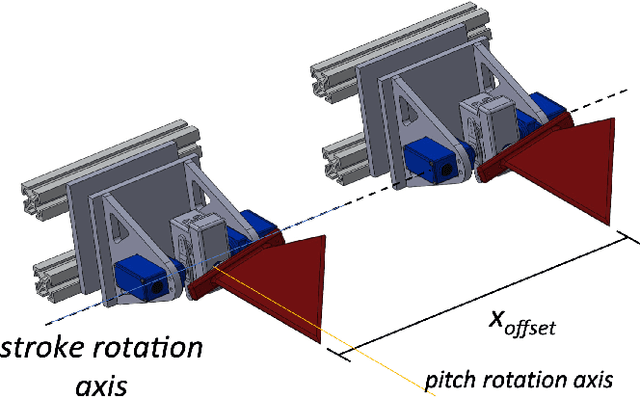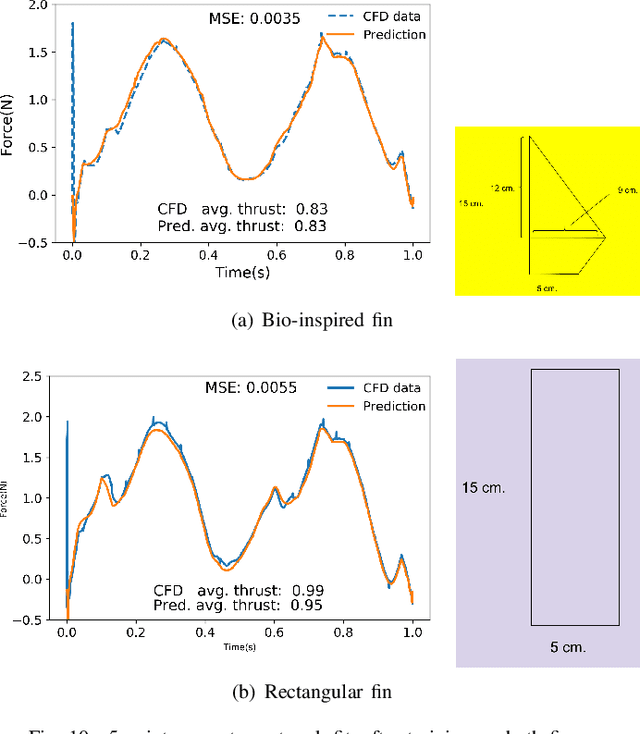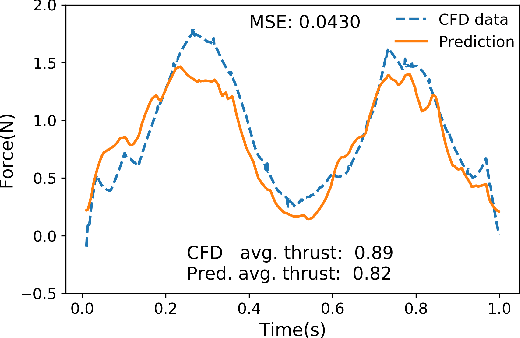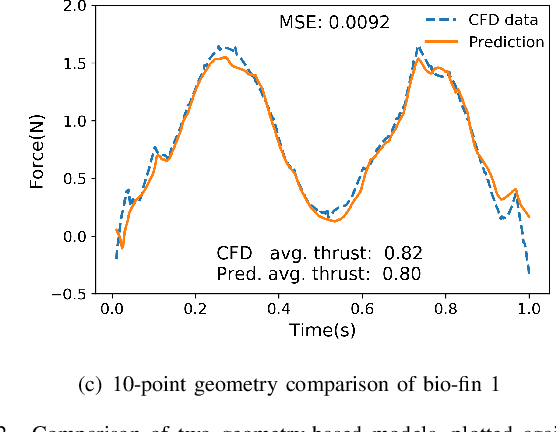Ravi Ramamurti
Data-Driven Approaches for Thrust Prediction in Underwater Flapping Fin Propulsion Systems
Jun 04, 2024Abstract:Flapping-fin underwater vehicle propulsion systems provide an alternative to propeller-driven systems in situations that require involve a constrained environment or require high maneuverability. Testing new configurations through experiments or high-fidelity simulations is an expensive process, slowing development of new systems. This is especially true when introducing new fin geometries. In this work, we propose machine learning approaches for thrust prediction given the system's fin geometries and kinematics. We introduce data-efficient fin shape parameterization strategies that enable our network to predict thrust profiles for unseen fin geometries given limited fin shapes in input data. In addition to faster development of systems, generalizable surrogate models offer fast, accurate predictions that could be used on an unmanned underwater vehicle control system.
Computational Approaches for Modeling Power Consumption on an Underwater Flapping Fin Propulsion System
Oct 21, 2023



Abstract:The last few decades have led to the rise of research focused on propulsion and control systems for bio-inspired unmanned underwater vehicles (UUVs), which provide more maneuverable alternatives to traditional UUVs in underwater missions. Propulsive efficiency is of utmost importance for flapping-fin UUVs in order to extend their range and endurance for essential operations. To optimize for different gait performance metrics, we develop a non-dimensional figure of merit (FOM), derived from measures of propulsive efficiency, that is able to evaluate different fin designs and kinematics, and allow for comparison with other bio-inspired platforms. We create and train computational models using experimental data, and use these models to predict thrust and power under different fin operating states, providing efficiency profiles. We then use the developed FOM to analyze optimal gaits and compare the performance between different fin materials. These comparisons provide a better understanding of how fin materials affect our thrust generation and propulsive efficiency, allowing us to inform control systems and weight for efficiency on an inverse gait-selector model.
Evaluation of Surrogate Models for Multi-fin Flapping Propulsion Systems
Oct 31, 2019



Abstract:The aim of this study is to develop surrogate models for quick, accurate prediction of thrust forces generated through flapping fin propulsion for given operating conditions and fin geometries. Different network architectures and configurations are explored to model the training data separately for the lead fin and rear fin of a tandem fin setup. We progressively improve the data representation of the input parameter space for model predictions. The models are tested on three unseen fin geometries and the predictions validated with computational fluid dynamics (CFD) data. Finally, the orders of magnitude gains in computational performance of these surrogate models, compared to experimental and CFD runs, vs their tradeoff with accuracy is discussed within the context of this tandem fin configuration.
 Add to Chrome
Add to Chrome Add to Firefox
Add to Firefox Add to Edge
Add to Edge